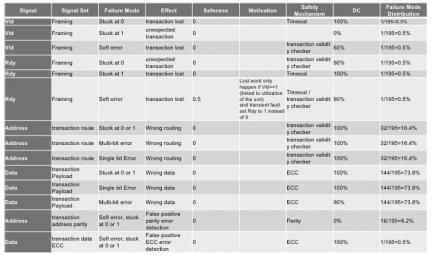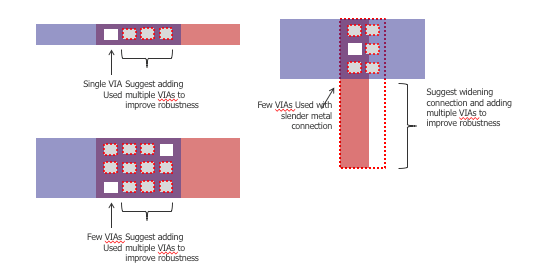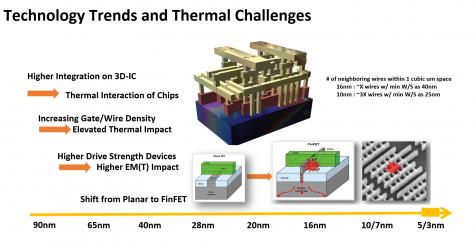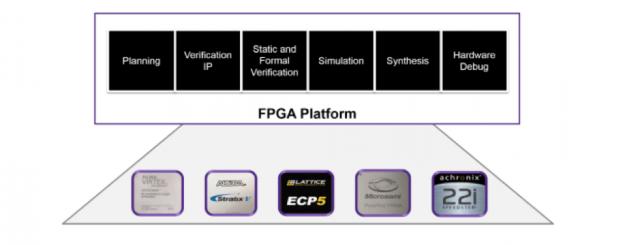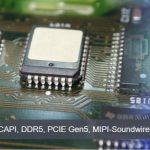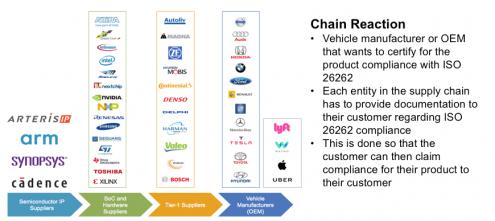In the course of building my understanding of functional safety, particularly with respect to ISO 26262, I have developed a better understanding of the design methods used to mitigate safety problems and the various tools and techniques that are applied to measure the impact of those diagnostics against ASIL goals. One area in… Read More
Tag: bernard murphy
Foundry Partnership Simplifies Design for Reliability
This builds on a couple of topics I have covered for quite a while from an analysis point of view – integrity and reliability. The power distribution network and some other networks like clock trees are particularly susceptible to both IR-drop and electromigration (EM) problems. The first can lead to intermittent timing failures,… Read More
Thermal and Reliability in Automotive
Thermal considerations have always been a concern in electronic systems but to a large extent these could be relatively well partitioned from other concerns. Within a die you analyze for mean and peak temperatures and mitigate with package heat-sinks, options to de-rate the clock, or a variety of other methods. At the system level… Read More
When FPGA Design Looks More Like ASIC Design
I am sure there are many FPGA designers who are quite content to rely on hardware vendor tools to define, check, implement and burn their FPGAs, and who prefer to test in-system to validate functionality. But that approach is unlikely to work when you’re building on the big SoC platforms – Zynq, Arria and even the big non-SoC devices.… Read More
John Lee: Market Trends, Raising the Bar on Signoff
I talked to John Lee (GM of the ANSYS Semiconductor BU) recently about his views on market trends and the ANSYS big-picture theme for DAC 2018. He set the stage by saying he really liked Wally’s view on trends (see my blog on Wally’s keynote at U2U). John said these confirm what he is seeing – a trend to specialization, some around… Read More
SemiWiki and SmartDV on Verification IP
Bernard Murphy and I spent time with the SmartDV folks in preparation for the Design Automation Conference later this month. Bernard is an internationally recognized verification expert so his feedback is often sought after by emerging and leading verification companies, absolutely. Verification IP is a crowded market so … Read More
Single-Chip Narrow-Band IoT
Many factors go into building a competitive solution for the IoT, but few are as important for high-volume applications as low cost – not just chip cost but total system cost. If your customers are going to deploy thousands, tens of thousands or even millions of your devices in cities, factories, logistics applications, power grids… Read More
CEO Interview: Jason Oberg of Tortuga Logic
I first met Jason Oberg, CEO and one of the co-founders of Tortuga Logic, several years ago when I was still at Atrenta. At that time Jason and Jonny Valamehr (also a co-founder and the COO) were looking for partners. The timing wasn’t right, but we’ve stayed in touch, for my part because their area of focus (security) is hot and likely… Read More
Innovation in a Commodity Market
Logic simulation is a victim of its own success. It has been around for at least 40 years, has evolved through multiple language standards and has seen significant advances in performance and major innovations in testbench standards. All that standardization and performance improvement has been great for customers but can present… Read More
ISO 26262: My IP Supplier Checks the Boxes, So That’s Covered, Right?
Everyone up and down the electronics supply chain is jumping on the ISO 26262 bandwagon and naturally they all want to show that whatever they sell is compliant or ready for compliance. We probably all know the basics here – a product certification from one of the assessment organizations, a designated safety manager and a few other… Read More


